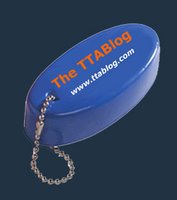Calvin Broadus, a/k/a SNOOP DOGGY DOGG, SNOOP DOGG, and SNOOP, successfully opposed an application to register the mark
SNOOPTUNES for "wireless transceivers for distributing audio, visual, and textual computer files over computer networks including music, books, plays, pamphlets, brochures, newsletters,journals, magazines on the subjects of sporting and cultural activities and a wide variety of topics of general interests." The fame of the registered
SNOOP DOGG mark and the name
SNOOP for musical entertainment played a dominant role in the Board's conclusion that confusion is likely.
Calvin Broadus v. Kristyn Kelley Allen dba Passive Devices, Opposition No. 91176834 (December 16, 2009) [not precedential].
 Snoop Dogg
Snoop DoggThe record was filled with evidence of the fame of Opposer and also established that SNOOP is a well-recognized nickname for SNOOP DOG. "[T]he public upon hearing the name Snoop would immediately associate the nickname Snoop with opposer and his music."
Applicant argued that Opposer failed to provide evidence of use of the "Snoop mark" in commerce. However, even without direct use of a mark by the claimant, "the courts and the Board generally have recognized that abbreviations and nicknames of trademarks or names used
only by the public give rise to protectable rights in the owners of the trade name or mark which the public
modified." [For example, AMEX for the American Stock Exchange].
Moreover, Applicant admitted that Opposer is commonly known as Snoop. And so there was no question that when used in the context of music, consumers understand SNOOP to be a reference to SNOOP DOGG.
Opposer's SNOOP DOGG mark and persona "have been associated with a diverse range of products and services." For example, Opposer endorsed Chrysler automobiles (along with Lee Iacocca) with the pitch line: "If the ride is more fly, then you must buy." In 2004, Opposer established a community sports program for inner-city youth, culminating each year in the "Snoop Bowl," held on the day of the Super Bowl and in the same city.
His endorsement value and crossover appeal have been widely recognized. A
Rolling Stone cover story in 2006 entitled "At Home with America's Most Lovable Pimp," stated: "Snoop Dogg has survived gangsta rap, charmed Hollywood and won over soccer moms - he's a hip-hop family man who's evolved from the consummate thug to the ultimate mack." [Talk about a role model? Take that, Tiger! -
ed.]
Nonetheless, Applicant argued that "the exclusive use of SNOOP is contrary to the evidence," but it was able to point only to the Snoopy cartoon character (in an unrelated field) and the character "Snoop" on the television show
The Wire (but no evidence of the extent of exposure of this name to the public).
Turning to a consideration of Applicant's goods, its product is an electronic device that allows users to share music between portable playing devices, including cell phones. The Board recognized that this is a distinctly different product from Opposer's musical recordings, but the question is whether the goods/services are so related as to cause confusion regarding source.
 Applicant's specimen of use
Applicant's specimen of useOpposer has used his mark and identity with consumer products such as cell phones and his music may be downloaded as ring tones for cell phones. Other celebrities are associated with or have endorsed mp3 products. [
E.g., U2]. And Opposer has been in discussions with Microsoft about a Zune mp3 player that would bear his name and likeness and feature his music.
The Board therefore found that the goods pf the parties are related in that consumers are likely to believe that an mp3-sharing device bearing a mark similar to the famous SNOOP DOGG mark and the SNOOP name emanates from or is licensed by Opposer.
As to the marks, the Board had no trouble in finding them similar in sound and appearance. Applicant feebly argued that the marks have different meanings, with SNOOPTUNES referring to "snooping tunes" because its device allows others to "snoop" the "tunes." The Board, however, found it more likely that the public would associate SNOOPTUNES with the famous entertainer rather than with some function of the device. And so the Board concluded that the similarity of the marks strongly favored Opposer.
Two incidents of confusion involving Applicant's MySpace profile also bolstered Opposer's case.
Finally, Applicant managed to win on the issue of intent, the Board ruling that Applicant had offered "a plausible 'good faith' explanation, supported by the record, for its adoption of the mark."
However, with the balance of
du Pont factors tipping decidedly toward Opposer, the Board sustained the opposition.
Text Copyright John L. Welch 2009.












































